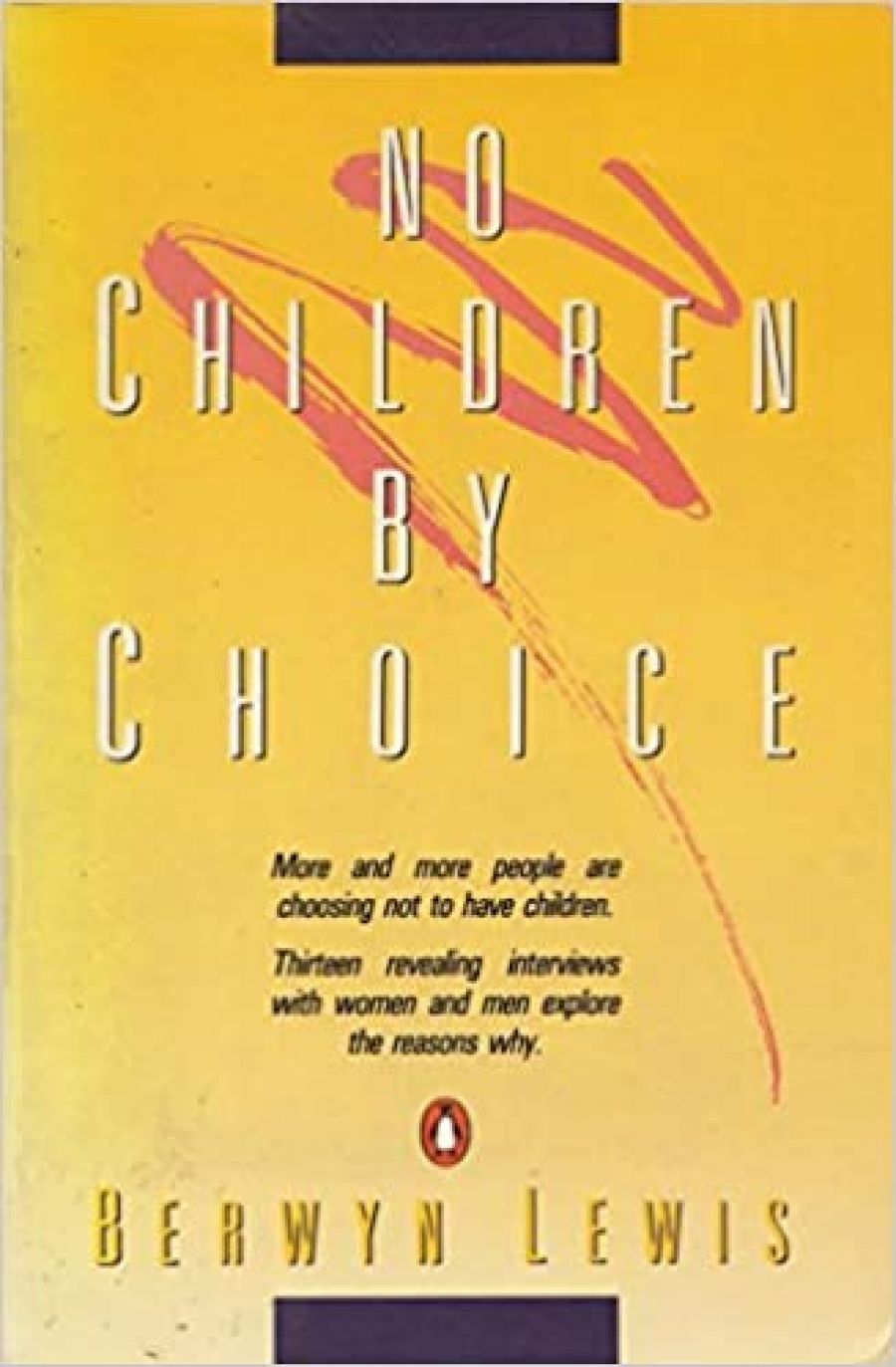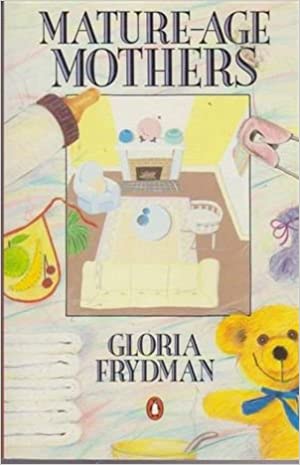
- Free Article: No
- Contents Category: Biography
- Review Article: Yes
- Article Title: To Have and Have Not
- Online Only: No
- Custom Highlight Text:
To have or not to have children: a dilemma made possible by technological advances and the consequent loosening of social roles. Once, having children was both an almost inevitable result of adult sexual activity and, generally, a desired one. For most people, being an adult member of a society implied having and taking responsibility for children. And for many people it still does. But it is now possible for people to choose when to have children, or to choose not to have them at all. No Children by Choice is a collection of interviews with men and women who have chosen not to have children; Mature Age Mothers is a collection of interviews with women who have not had children until they are over thirty (except for Junie Morosi who had three children in her teens and another child at 45).
- Book 1 Title: No Children by Choice
- Book 1 Biblio: Penguin, $9.95 pb,168 pp
- Book 2 Title: Mature Age Mothers
- Book 2 Biblio: Penguin, $11.95 pb,175 pp
- Book 2 Cover (800 x 1200):

Books of autobiographical interviews, essays, or profiles are increasingly common in Australia. We’ve had Men on Women (Women on Men is reputedly on the way), Tall Poppies, Good Talk, Being Different, Catholic girlhoods, memories of university, the two books under review and others. The publishing strategy is clear: think of a sociological category and make a collection of pieces by or about people who fit that category in some aspect of their lives. The assumption is that people’s talk about themselves is both interesting and revealing. Well, it sometimes is; but as everyone knows from dinner parties and family gatherings, it often isn’t. And these two books provide more evidence for this than for the belief that the voice of experience tells all.
The books contain almost no discussion of the broader context in which people have and don’t have children. There are, for example, no demographic statistics with which to compare the way the interviewees try to fit their experiences into trends and patterns. And we do not even have the context of the interviewers’ questions to help us interpret the meaning of these voices. Do we have a detailed account of at least one labour and birth per contributor to Mature Age Mothers because they were asked about them? Or is the physical giving birth so central to all of these women’s experiences of being a mother that they offered them spontaneously?
The latter would be fascinating, and would invite speculation about the current practices surrounding birth and the religiously observed preparation for it in which so many couples participate. It may also throw light on why some of the women in No Children by Choice seem to regret missing out on the physical experience of birth more than on the emotional relationship with a growing child. But I suspect it was the former, and that these accounts were prompted.
Similarly, in No Children by Choice the contradictions within particular pieces are made harder to interpret because of the absence of questions. People’s ideas about themselves are often less coherent than they know; one version may be proffered in answer to one question, a quite different version in answer to another. So how are we to interpret the contradictions in Gill Appleton’s piece? Towards the end she says that children are everyone’s responsibility, and yet earlier she has said she doesn’t invite people to her house who bring their kids. Is the assertion that children are everyone’s responsibility just something she felt she ought to say in response to a question, or hasn’t she noticed the tension between this sincerely held belief and her practice of banning her friends’ children from her house?
While the interviewees in these two books have come to different answers to the same question, they are united in seeing their decisions as exercises of choice. In No Children by Choice the decision to remain childless is seen as a triumph over both biological instinct and social forces. Most use sociological terms like ‘stereotype’, ‘conditioning’, ‘role model’ or ‘social pressure’, to describe their sense of having created their own life. Except for the idea of ‘the child in oneself and some rather loose talk of neuroses there is a marked absence of psychological language. The editor, Berwyn Lewis, writes in her introduction:
The interviews which follow affirm that there are other options and that rigid stereotypes, pressures, inappropriate traditions and social expectations can be outgrown and replaced with creative and satisfying adventures in life.
These people see themselves as having chosen. The only person who departs from this is Martin Harrison in what is by far the most reflective piece in the book: ‘I think it is an illusion that someone has a choice not to have a child; it’s subject to emotion, events, circumstances.’
For many of the interviewees, their own sense of having made a choice implies a contrast with other people who have, presumably, not chosen. In No Children by Choice, these other people are those who have children because they have given in to instinct and social pressure; in Mature Age Mothers, they are those who have children at an early age. It doesn’t seem that one can choose to have children at eighteen or twenty-two. And of course those who just have children are the working class, ‘the Westies’, the less educated, the girls who left school early and were left behind.
The editor of Mature Age Mothers comments that those interviewed ‘were admittedly, all middle class despite my efforts to find mature-age mothers from other classes’. It is hard to imagine what these efforts were. The use of ‘classes’ in the plural suggests they were not just directed towards finding working class women. Do upper class and lower middle class exist as separate class categories for this editor? And how was ‘working class’ defined? The lack of reflection on such questions is indicative of the interviewees’ rather smug belief in the distinctiveness of the exercise of choice in their lives, with the working class continually evoked to mark the difference.
Bearing and bringing up children is a sensual, emotional and intellectual experience of enormous complexity, making one both stronger and more vulnerable, sharpening one’s sense of time and of loss, yet grounding one in something beyond. Apart from the occasional mention of joy, there is little sense in Mature Age Mothers of the depth of the experience. Which is not to say that the people interviewed don’t have it. But the language in which they talk about themselves – a mixture of banal sociological language with the everyday language of conversation – does not lead them to reflect on it. The resources of their language cannot reach the meaning of the experiences they are describing. These books remind us forcefully of why we need fiction and poetry.


Comments powered by CComment